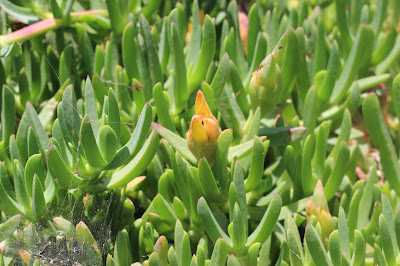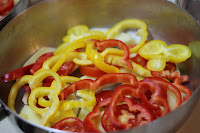Last night I had dinner at Eucalyptus - the restaurant of the well-known chef, Moshe Basson, whose cooking is inspired by the historical foods of the Bible. I saved this experience until the end of my trip because I wanted to first understand more about the foods of other cultures throughout Israel. Dinner at Eucalyptus pulled it all together.
The restaurant is located across from the Jaffa Gate of the Old City. It is at the head of the Artists Colony, Hutzot Hayotzer, and immediately adjacent to Teddy Park, a brand new city park named for the former and long term major of Jerusalem, Teddy Kolleck.
 |
| Before dinner at Teddy Park |
Moshe Basson was born in Iraq in 1950 but grew up in a transient camp in Talpiyot, now both an industrial area and a popular neighborhood in south Jerusalem largely in habited by Anglos. His parents owned a bakery in a nearby Arab village, so cooking was in his blood from the time he was a young child. With the location of the bakery Moshe became familiar with the herbs and grains used in Palestinian cooking. He would go out to the fields with his Arab acquaintances to forage, and he learned to cook with some of the more unusual ingredients. He spoke to me about his dream of bringing the real foods of Israel to the tables.
I arrived at the restaurant early by Jerusalem time, at 7:00 pm. The restaurant was empty. I sat outside until it got too chilly then moved inside to a warmer, cozier dining room. By the time I left at 9:30 the place was hopping with couples and families.
I had the tasting menu because I wanted to try everything! I was concerned though because other experiences I've had with tasting menus left me hungry at the end. My waitress, Miral, assured me that wouldn't be the case - and was she ever right!
Here is what I had for dinner.
 |
| Spreads |
Coriander and cilantro are the same - I love cilantro, so this was my favorite spread.
 |
| Khuubeiza- Mallow |
3. Roasted cauliflower garnished with parsley. Many of us have made roasted cauliflower, but this was more soft, moist and beautifully brown than mine ever was.
 |
| Roasted cauliflower |
4. Smoked eggplant with tahini and pomegranate syrup. Smoked, not just roasted! Woops - I couldn't resist, and took a bite before taking the picture.
 |
| Smoked eggplant with tahini and pomegranate syrup |
 |
| Sampler of Soups |
6. Stuffed fig with chicken breast and tamarind sauce. The chicken was chopped perfectly - not too big, but sized enough that you could taste the flavor of the meat. The stuffed fig was cooked in the tamarind sauce so the flavor just exploded when it reached your mouth. Favorite dish #2
 |
| Stuffed fig with chicken, cooked in tamarind sauce |
7. Mallard in a wine sauce. Mallard is a wild duck, and I love duck. This was mild and delicious. I thought the wedge of vegetable was a potato, but in fact it was a lightly poached pear. These were joined by a puree of pumpkin. Favorite dish #1
 |
| Mallard with pear and pureed pumpkin |
Not finished yet. Although I was getting full.
8. Magluba. You may remember this was the dish I learned to make with the Bedouin woman. This magluba was a smaller version but still too big for one person who had already had seven dishes. I actually asked Miral to put this in a "take away" box for me. It will be a great dinner tonight.
At this point in time, Moshe Basson joined me at my table, which actually gave me a chance to rest as the 9. chopped lamb kebab and the 10. roasted lamb pie sat in front of me. He actually commented that he may not have recommended the full tasting menu for one person because it's hard to reduce the portion size for only one without losing something. I recognized then that this was an extreme amount of food that I'd been served. I'm not that much of a red meat eater, and although I do love lamb, these were two dishes that I tasted but didn't finish. I had already taken a picture of the lamb kebab before he sat down, but I didn't have the nerve to take a picture of the lamb pie while he was sitting across from me.
 |
| Lamb kebab |
Moshe (my new friend) and I had a lovely conversation. He talked about his passion for the foods of the bible that are grown throughout Israel and how he saw his mission to bring these foods to the people. He said he knew he had been successful now that other chefs in Israel are starting to use these ingredients. I told him about my trip and what I had been learning, and he told me I'd live a long life. He must have sat with me for over 30 minutes until he was called to the kitchen. Before he left he invited me back in the late winter or spring to go foraging with him in the fields. I was very complimented and may have to do that. He was very generous with his time and offered his help any time.
Before he left (and before dessert), I did get up the nerve to ask a very touristy favor, for a picture with him. He was more than happy to accommodate me.
10. Dessert. Dessert was also a trio of tastes: basbousa, ice from paradise and pureed pears with almond cream. Basbousa is a semolina cake that is soaked in a sweet lemon syrup. Ice from paradise was a sweet gelatin-like texture with wine. The dish was then scattered with pistachios.
 |
| Dessert |
 |
| Full but happy |
Needless to say, this was quite a culinary adventure and a wonderful way to spend one of my last evenings in Jerusalem. When I left the restaurant I walked past Teddy Park where the fountain was dancing and I couldn't resist taking one last photo.







































